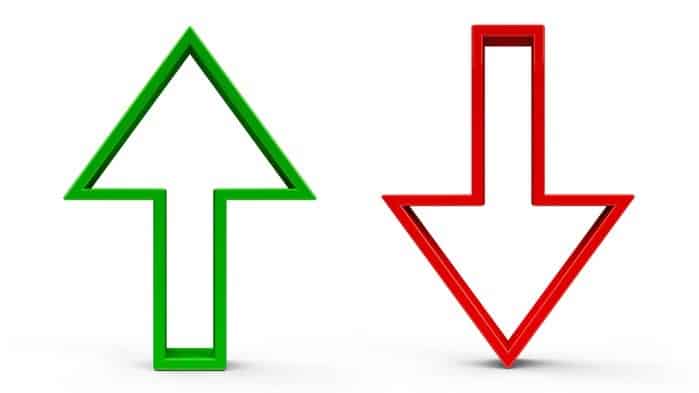This article was originally published on Fool.com. All figures quoted in US dollars unless otherwise stated.
The e-commerce behemoth is clearly a more exciting company than the grocery store chain. On a risk-adjusted basis, however, both Amazon (NASDAQ: AMZN) and Kroger (NYSE: KR) have proven heroic over the course of the past year. The latter's same-store grocery sales improved 14% in 2020, with the company answering the call by stepping up its online shopping and curbside pickup games. Amazon was of course already prepared for the demands of the pandemic, reporting top-line growth of 38% and nearly doubling the year's net income. Both companies are expected to continue thriving going forward even if the most frenzied growth is in the rearview mirror.
If there's only room for one of these names in your portfolio right now, it's got to be Kroger. But not for the reasons you might think.
Why not Amazon?
Don't misread the message. Amazon is still a juggernaut no retailer wants to tangle with. Kroger, for all its strengths, is still just a grocer. The industry doesn't lend itself to great growth.
Stock-picking is all about balancing risk, growth, and price, and on a relative basis, investors may be overpricing Amazon by underestimating a couple of key risks ultimately working against its growth.
One of these risks is still gelling. That's the effort to form a first-ever Amazon worker union for the 5,800 employees at a warehouse in Bessemer, Alabama. Those votes are being tallied right now.
The implications are enormous. If successful, those workers in Bessemer could embolden the creation of unions at more of Amazon's facilities, changing working conditions in each of them in a way that costs the company more while potentially crimping current productivity. And even if Bessemer employees decide not to unionize, the effort to form unions at other Amazon warehouses has been growing. If not now, unionization could still happen later.
The other risk Amazon faces is more philosophical, although it's becoming more tangible by the day. That is, the federal government is increasingly leaning on big corporations -- and big technology companies in particular.
The movement is coming in lots of forms. President Biden, for instance, is looking to hike corporate tax rates from 21% to 28%. Moreover, some state courts now say Amazon itself can be held liable for damages caused by faulty or counterfeit goods sold via its e-commerce platform. Then there's the headwind that never seems to go away -- Amazon is still in antitrust regulators' crosshairs, domestically and abroad. A national coalition of small businesses is renewing this scrutiny this very month.
None of these challenges are new to the company. But they're seemingly gaining more traction than they had in the past. The risk to Amazon's stock isn't so much results that reflect these growing headaches but rather, results that fall short of expectations because of these complications.
Why Kroger
Meanwhile, Kroger faces no such headwinds. If anything, it enjoys support from consumers who appreciate what it does and how it's doing it. Investors in the meantime are underestimating the potential growth in store once the impact of the pandemic wears off.
Like most other stocks, Kroger shares bounced out of the March 2020 market-wide lull once it became clear COVID-19 was a problem that could be worked around. Shares have strangely underperformed since then and are only up 32% from that low versus the S&P 500's 82% gain for that twelve-month stretch. Unlike most other stocks, Kroger shares are still trading below their 2016 peak. It's a not-so-subtle sign that investors don't see much growth in its future above and beyond the grocery industry's inherent growth.
That's a stance, however, that underestimates Kroger's plan for the post-pandemic environment.
The company laid this plan out with some decent detail a week ago, explaining during a virtual investor day event how fresh foods will be a focal point going forward; digital sales will remain a key growth engine; and more private-label goods are in the works. Investors collectively shrugged. Analysts weren't exactly thrilled either. Shares actually fell following the presentation, yet at $37 they still linger above the consensus price target of $35.71.
That doubt in Kroger's future is a big mistake -- for a couple of reasons.
First, there's arguably no name better at the private-label grocery business than Kroger. Of last year's top line of $132.5 billion, $26.2 billion of it came from homegrown "Our Brands," like Simple Truth and Private Selection. These in-house brands can be on the order of 25% to 30% more profitable than national brands.
Second, while more and better fresh food may not seem a game-changer in the grocery business, it's a part of the business that's become surprisingly important. An effort to eat healthier was well underway before COVID-19 took hold. Deloitte notes that between 2000 and 2017, fresh fruits and vegetables saw the most sales growth among all food categories. The pandemic only accelerated interest in smarter diets. Meanwhile, fresh meat sales are projected to grow on the order of 7% through 2025, snapping the segment out of a long-lived lull. That's huge for the food business.
Point being, Kroger is pressing consumers' most important buttons.
Kroger looks appetizing
If you own Amazon and don't particularly want to swap it out for Kroger, don't sweat it. As was noted, both companies are winners in their own right.
However, if you're looking for an underappreciated consumer staples name to fill a void in your portfolio, Kroger is it. You're collecting a 2% dividend while you wait for everyone else to connect the dots.
This article was originally published on Fool.com. All figures quoted in US dollars unless otherwise stated.









